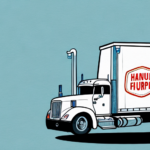Importance and Benefits of Delivery Route Optimization
Delivery route optimization is essential for businesses that rely on delivering goods or services to customers. An efficient delivery route can streamline operations, save time, reduce costs, and enhance customer satisfaction. Without optimization, businesses may face increased fuel costs, higher operational expenses, and reduced customer loyalty due to delayed or missed deliveries.
Moreover, optimizing delivery routes contributes to environmental sustainability by minimizing fuel consumption and lowering the carbon footprint. According to a U.S. Department of Transportation report, optimized routes can reduce fuel usage by up to 15%, significantly impacting operational costs and environmental impact.
- Increased Productivity: More deliveries can be made within the same time frame.
- Cost Reduction: Lower fuel and vehicle maintenance costs.
- Enhanced Customer Satisfaction: Faster and more reliable delivery service.
- Environmental Benefits: Reduced fuel consumption and emissions.
Key Factors Influencing Delivery Route Optimization
Traffic and Road Conditions
Real-time traffic data and road conditions play a significant role in determining the most efficient delivery routes. Congested areas can lead to delays, so incorporating traffic patterns helps in planning alternative paths.
Distance and Delivery Deadlines
Balancing the shortest distance with strict delivery deadlines ensures that packages arrive on time without unnecessary detours.
Weather Patterns
Adverse weather conditions can affect delivery times and route safety. Planning for weather contingencies is essential for maintaining schedule reliability.
Type of Goods
The nature of the items being delivered affects route planning. Perishable goods may require faster routes, while fragile items need careful handling and specific transportation conditions.
Tools and Technologies for Optimizing Delivery Routes
Route Planning Software
Tools like ShipScience’s Route Planning Software help map out the best path for deliveries, taking into account various factors such as traffic and delivery windows.
Vehicle Tracking Systems
Real-time tracking enables businesses to monitor fleet locations, allowing dynamic route adjustments based on current conditions.
Intelligent Routing Algorithms
Advanced algorithms analyze multiple variables to optimize routes for efficiency, minimizing travel time and fuel consumption.
GPS Technology
GPS systems provide accurate location data, ensuring that drivers follow designated routes and helping managers monitor delivery progress.
Data Analytics
Analyzing delivery data helps identify patterns and inefficiencies, enabling continuous improvements in route planning.
Strategies and Best Practices for Route Optimization
Define Clear Objectives
Establishing specific goals, such as reducing fuel costs or improving delivery times, guides the optimization process.
Utilize Technology Effectively
Incorporate tools like GPS tracking and route optimization software to streamline operations and gain real-time insights.
Regular Monitoring and Analysis
Continuously monitor delivery data to identify opportunities for improvement and adjust routes as needed.
Effective Communication
Maintain open lines of communication with delivery teams and customers to ensure smooth operations and timely updates.
Flexibility and Adaptability
Be prepared to adjust routes in response to changing conditions such as traffic, weather, or unexpected delays.
Measuring Success and Learning from Case Studies
Key Metrics to Track
- Delivery Times
- Customer Satisfaction Rates
- Fuel and Transportation Costs
- Fleet Utilization
- Number of On-Time Deliveries
Evaluating these metrics helps assess the effectiveness of your delivery route optimization strategy. For example, a national food distributor using optimization software reported a 20% reduction in delivery miles and saved $31,000 in fuel costs, leading to higher productivity and customer satisfaction.
Case Studies
Analyzing successful implementations provides valuable insights. A transportation provider optimized its routes to reduce empty miles by 7.3%, enhancing fleet utilization and overall efficiency.
Future Trends in Delivery Route Optimization
Autonomous Delivery Vehicles
The integration of autonomous vehicles promises to further optimize routes and reduce delivery times through advanced navigation and real-time adjustments.
Blockchain Technology
Blockchain can enhance route transparency and security, ensuring more reliable tracking and data integrity.
Machine Learning Algorithms
Machine learning enables the development of smarter routing systems that adapt to changing conditions and optimize in real time.
Conclusion
Optimizing delivery routes is essential for businesses aiming to enhance efficiency, reduce costs, and improve customer satisfaction. By leveraging advanced tools and technologies, understanding key influencing factors, and implementing best practices, businesses can create effective delivery route strategies. Continuous measurement and adaptation, along with staying abreast of emerging trends, ensure that delivery operations remain competitive and sustainable in a dynamic market environment.




















